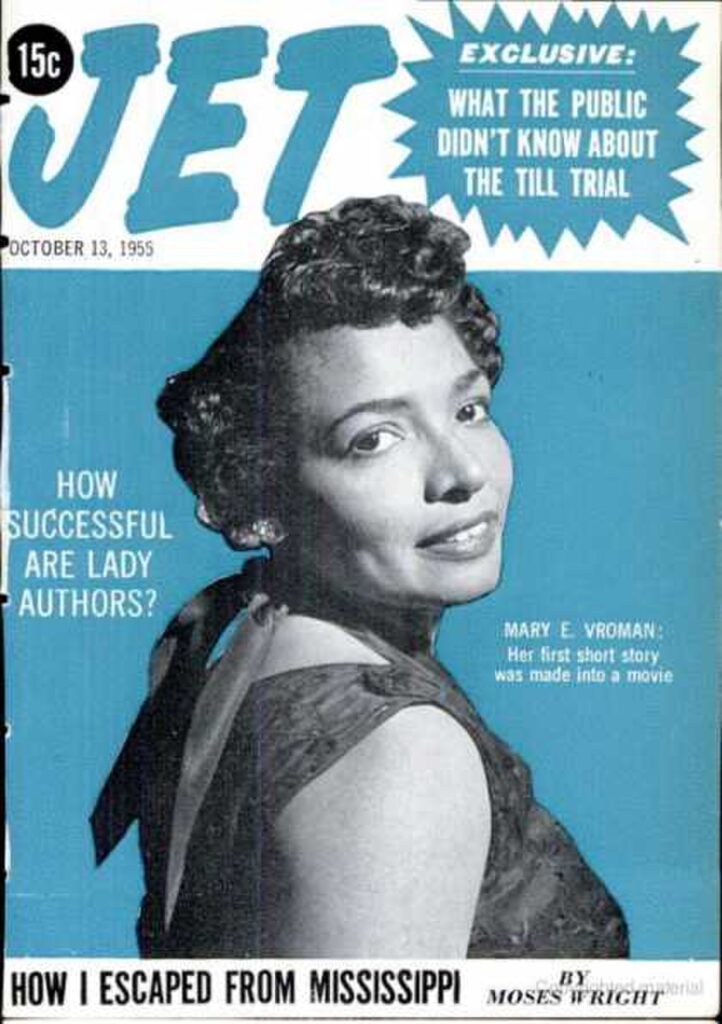By: Sydnee Walcott
Over the past few years, there has been a surge among Black entrepreneurs that have the desire to generate their own income independently without relying on a salary or conforming to a company’s protocol. This level of independence comes with a distinct responsibility of managing several duties that are riskier when launching a business.
Between the years of February 2020 and February 2022, the rise of Black entrepreneurs among Black communities increased. Statistics reveal that the number of self-employed Black professionals increased from one million to two million.
The COVID-19 pandemic is a contributing factor that explains the rapid growth in Black entrepreneurship and small Black owned businesses.
As many Black workers were affected by layoffs and experienced limited employment opportunities during the pandemic, many decided to hone in on their creative skills to create their own businesses and set new goals for themselves.
This article will pay tribute to some of the world’s most influential Black entrepreneurs who broke down racial barriers in different sectors.
O.W. Gurley
Born to formerly enslaved parents, O.W. Gurley was a self-educated individual who dreamed of reaching new heights with respect to his career. He took steps to ensure his vision became a reality.
Before becoming an entrepreneur, Gurley worked as both a teacher and for the U.S. postal services. During the time he spent working these jobs, he discovered that he wanted a lifestyle that aligned with his aspirations. Gurley resigned from his old jobs to seek freedom, opportunity, and wealth in the Great Oklahoma Land Rush.
Gurley had the ambition to transform Oklahoma into a new life for African Americans since emancipation. Hurley had achieved a number of accomplishments, as he ran for county treasurer, became the principal at the town’s school, and opened a general store.
Once Gurley learned about the giant oil fields in nearby Tulsa, he was quick to sell his store and land, and moved to Tulsa for another intriguing venture.
Gurley believed that Black people had a better chance to achieve economic success if they each shared their own resources and worked together to support each other’s businesses. He purchased 40 acres of land in Tulsa and the acres of land would soon be named the Greenwood neighbourhood.
Greenwood transformed into a location of wealth, education, and technological advancement filled with Black doctors, lawyers, realtors, and Black-owned luxury hotels. With the area encompassing Black-owned businesses, Booker T. Washington labelled the area as “Black Wall Street.”
Greenwood was a place for Black people to escape economic, social, and political oppression within the Deep South.
By 1920, Black Wall Street became a bustling neighbourhood with economic success that opened up new employment opportunities for many Black people.
Unfortunately, the town was destroyed in the 2021 Tulsa Race Massacre. However, this devastating news did not stop African Americans from working together to help rebuild Greenwood. Many African Americans saw this as a challenge to include new opportunities that allowed them to excel economically.
A year after the massacre, Greenwood was massively reconstructed without the help of the greater Tulsa community. Following the reconstruction period, there were 80 businesses who successfully launched their vision and achieved support.
Although Black Wall Street has changed in several different ways, work has been done throughout the years to help restore the town to its former glory and uphold Gurley’s legacy in establishing economic opportunities among Black people.

John H. Johnson
Journalism offers many avenues to discuss topics such as sports, politics, lifestyle, music, and culture.
In the Black community, John H. Johnson became the most influential African American publisher to receive praise for his editorial success.
Johnson was introduced to the industry when he started to work for the Supreme Life Insurance Company while attending the University of Chicago. His job required him to compile a series of news clippings, which would then lead him to generate meaningful topics for a magazine centered around Black people.
In 1942, after graduating from university, he was eager to put this plan into action with the help of a $500 loan from his mother’s furniture and raised an additional $6,000 through subscriptions to create the magazine Black World.
The now-defunct monthly magazine was an unabashed imitation of Reader’s Digest, which published a series of articles that discussed African American life with an emphasis on racial evolution in society.
10 years after the close of Black World, the magazine relaunched and continued to stick to the original concept while focusing on African American literature, history, culture, Black power, Black arts and entertainment, and Pan-Africanism.
Three years after the launch of the original Black World, Ebony magazine was founded and has rightfully earned the title of the number-one African American magazine in the world.
Ebony is an African American news and photography magazine that resembles Life magazine. Initially, the magazine highlighted African Americans within the entertainment and sports industry but has since focused on including Black identity and success from all sectors.
In 1951, Johnson published the Jet magazine. The name of the weekly magazine stuck with Johnson because the news section includes topics that spread quickly among the masses and he wanted the magazine to symbolize “Blackness and speed.”
The magazine covered entertainment, politics, sports, social events, and features on different personalities, places, and events geared towards African Americans.
Jet garnered national attention for their coverage due to the showcasing of Emmett Till’s murder with graphic images of the teen’s body placed in an open casket.
The magazine became defunct in 2014, before being revived two years later publishing virtual articles.
Johnson created a legacy for himself as an influential leader who broke barriers and helped create a platform for Black people within the publishing industry.
Cathy Hughes
Television is a viable source of entertainment when spending time at home, but the radio is where many tune in when travelling.
Cathy Hughes began her radio career at KOWH (AM), a station owned by a group of talented and respected African American professionals. This station was located in her hometown of Omaha, Nebraska.
In 1971, Hughes engaged in a new venture when she started working as a lecturer at the School of Communications at Howard University.
During her tenure at the university, she made remarkable efforts to increase the station’s profits from $250,000 to $3 million while working as the general sales manager. This was accomplished all within a short time frame of one year.
Hughes was recognized for revolutionizing urban radio by creating a unique and distinct format referred to as the Quiet Storm. This new format aired on over 480 stations, which covered the nation. This led to her becoming the first woman, vice president, and general manager working at a radio station.
In 1980, Hughes became an entrepreneur when she decided to purchase her first radio station titled WOL-AM, located in Washington D.C. She then went on to create an additional format known as 24-Hour Talk including Black perspectives.
In 1999, her big break emerged when she became the first African American woman to chair a publicly held corporation with the launch of Radio One Inc. This launch was extremely significant to the Black community because it was the first Black-owned and female-owned radio company to dominate major markets.
The multi-media company is an urban radio market leader with 56 stations that air many genres such as hip hop, R&B, gospel, and podcasts.
Radio One is now the parent corporation of several subsidiaries inducing: TV One, Reach Media, and Interactive One.
Hughes is a major force within the radio industry, her talent and innovation influence new and upcoming stations to adopt similar practices to reach success and diversify its coverage throughout the nation.
Sheila Johnson
Year 2023 marked the year that signified the 50th anniversary of hip hop. In particular, there was a specific channel that helped garner success within this genre.
Before 1980, there was not a single channel that was completely focused on including Black audiences.
Sheila Johnson discovered her love and passion for music after graduating from high school. Along with her now ex-husband, Robert Johnson, the two lobbied in hopes to create a cable channel that would include an African American audience.
In 1980, the former couple successfully co-founded Black Entertainment Television (BET).
Although music videos were a popular form of self expression that garnered a series of views, BET also offered programming for younger audiences. These programs honed in on topics that addressed political issues, comedy skits, talk shows, sports news, and an annual award show to highlight and celebrate Black people within the entertainment industry and other occupation sectors.
In 1999, when Johnson left the network she decided to immerse herself in other business ventures that focused on opening her own hotel resort and spa management service. She was then recognized as the first woman to be a reputable stakeholder within the WNBA, NHL and NBA.
Johnson’s contributions to the launch of BET gave many Black entertainers the chance to have their talent showcased and the opportunity for Black viewers to see talent in their community that changed the lives of many. These contributions have allowed others to reach their own personal goals within the industry and excel, as she has provided new opportunities for herself and many others.
Rihanna
Rihanna is recognized as a singer that has become a prominent figure in the beauty community. The launch of her cosmetic brand Fenty Beauty has revolutionized the way brands view inclusivity due to her extensive shade range.

In 2005, Rihanna made it to the top charts due to her debut single, “Pon de Replay.” Twelve years after her debut, Rihanna released a makeup line that would transform the way brands innovated new formulas within the cosmetic industry.
While the makeup line includes brushes, eyeliner, eyebrow pencils, lip gloss, and primers, her launch of foundation and concealer stands out to most customers and makeup artists.
What sets Fenty Beauty apart from most makeup lines is their diverse range of foundations and concealers that can accommodate every shade of skin from light to dark.
The inclusion of representing every skin complexion broke racial barriers within the industry as Black women of a darker complexion have often struggled with finding the correct shade that matches their skin tone.
In 2020, Rihanna expanded her brand with the introduction of Fenty Skin. The skincare line consists of cleansers, sunscreens, masks, toners, and exfoliants.
Almost six years after its launch, Fenty Beauty continues to be one the top beauty brands across the globe that represents diversity among all sexualities, genders, ages, and races.
These five Black entrepreneurs along with many others have helped transform the music, cosmetic, and business industry. Their insight on transforming real world oppression into success set them apart from the rest. They both challenge racial barriers and the way we view inclusivity, demonstrating their renowned intelligence and innovation that continue to remain a legacy.
Sydnee Walcott is a Copy / Contributing Editor for Black Voice. She is also a writer who likes to capture the essence when writing articles on a variety of topics.

